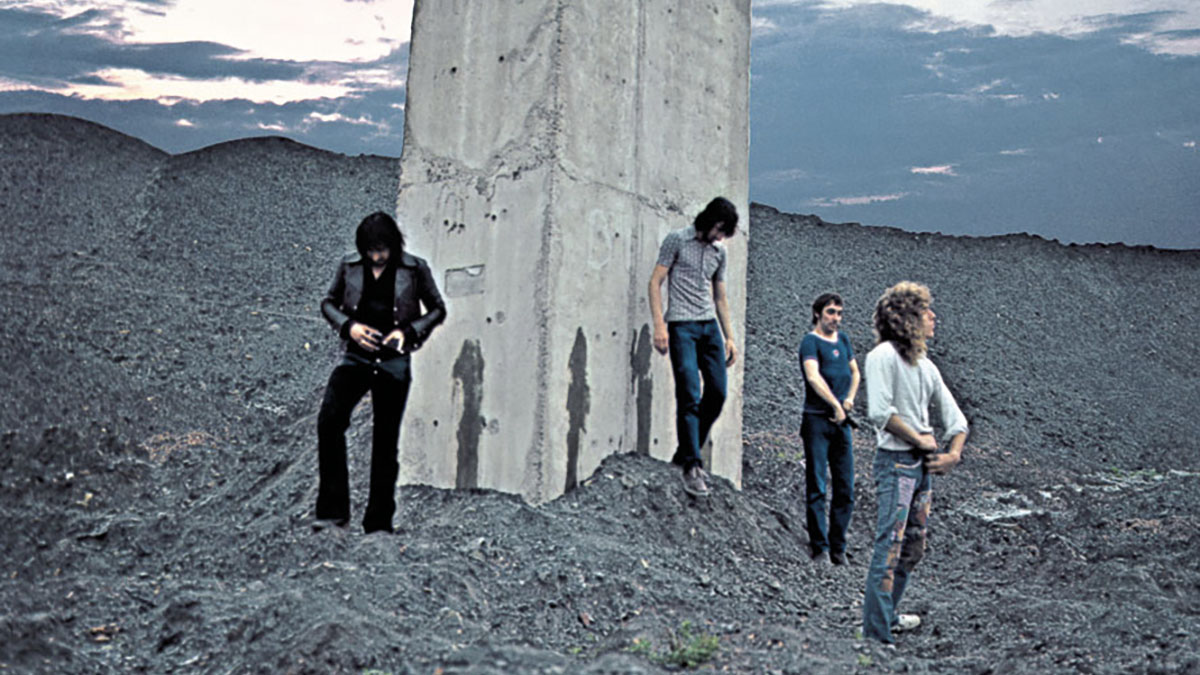Ethan Russell Unzips the Story Behind His Infamous 'Who’s Next' Cover Photo
How a slag heap on the heartland of England's heavy industry framed one of the most iconic shots in rock history.

Who’s Next may have one of rock’s most memorable album covers. But photographer Ethan Russell’s image of the group in what appears to be post-elimination contemplation wasn’t exactly what Pete Townshend imagined for the band’s creation.
“I talked to Pete about what was on his mind while he was writing the songs,” Russell recalls. “He talked about going off in a caravan and living off the land – obviously, that’s an idea that came out of Lifehouse. So I was going out and photographing landscapes with beautiful sunsets, and a lone Land Rover with its lights on. It was very poetic, but it had nothing to do with the album’s title.”
For that matter, the group had rejected photos of an earlier concept featuring drummer Keith Moon dressed as a whip-wielding dominatrix. Who’s next? Indeed.
On Friday, May 14, 1971, with time running out, Russell joined the Who for a car trip to the University of Liverpool, where they were performing, hoping inspiration would strike. While there, he photographed the band pretending to destroy their dressing room, a shot of which was used on Who’s Next’s back cover.
The following morning, as the group drove through Sheffield en route to London, Russell spotted a coal slag heap dotted by four or five large concrete monoliths placed to keep the dross from shifting.
“It looked like the surface of the moon,” he recalls. Or, for that matter, the opening scene from Stanley Kubrick’s 1968 film, 2001: A Space Odyssey, in which knowledge is revealed to primitive man in the form of a large monolith.
“I was thinking about that scene,” Russell says, “so I had the band sort of behaving the way the apes and humans do in the movie, reacting to it in fear.”
Mission accomplished, they decided to have some fun – which is how the selected cover image came to be. But Russell delivers a spoiler: “Nobody peed. We just filled some empty 35mm film canisters with water and poured it on the cement. I mean, the whole thing was so outrageous. I just thought, There’s no way they’re going to use this!”
Get The Pick Newsletter
All the latest guitar news, interviews, lessons, reviews, deals and more, direct to your inbox!
Christopher Scapelliti is editor-in-chief of GuitarPlayer.com and the former editor of Guitar Player, the world’s longest-running guitar magazine, founded in 1967. In his extensive career, he has authored in-depth interviews with such guitarists as Pete Townshend, Slash, Billy Corgan, Jack White, Elvis Costello and Todd Rundgren, and audio professionals including Beatles engineers Geoff Emerick and Ken Scott. He is the co-author of Guitar Aficionado: The Collections: The Most Famous, Rare, and Valuable Guitars in the World, a founding editor of Guitar Aficionado magazine, and a former editor with Guitar World, Guitar for the Practicing Musician and Maximum Guitar. Apart from guitars, he maintains a collection of more than 30 vintage analog synthesizers.
“That's enough to make anybody who writes songs want to retire." Mark Knopfler on his difficult collaboration with his childhood hero, Bob Dylan
“I knew he was going to be somebody then. He had that star quality”: Ritchie Blackmore on his first meeting with Jimmy Page and early recording sessions with Jeff Beck










